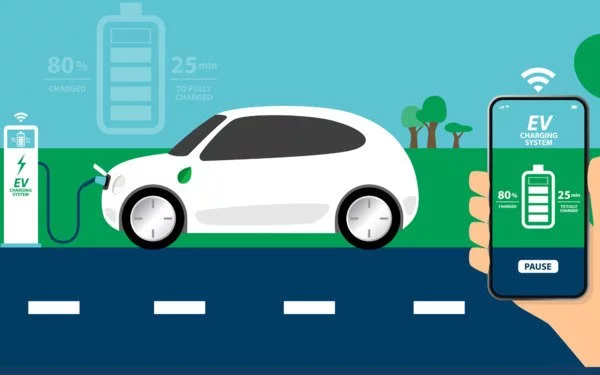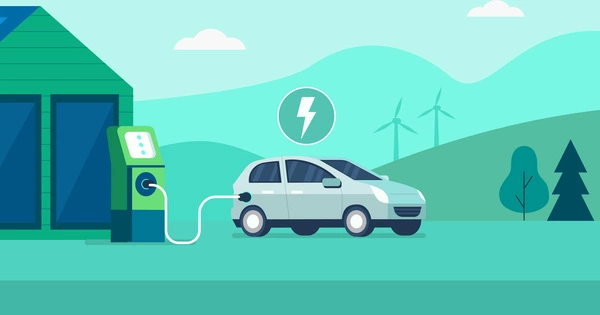Studies have consistently shown that electric vehicles (EVs) produce less air pollution than traditional gasoline or diesel vehicles, which has the potential to improve air quality and public health. When EVs are powered by electricity from clean energy sources like wind and solar power, they produce zero tailpipe emissions. Even when they are powered by electricity from fossil fuels, they still produce less emissions than traditional vehicles because power plants are often more efficient at converting fuel to energy than car engines.
In the first study to use real-world data to link electric cars, air pollution, and health, a team of researchers has now begun to document the actual impact of electric vehicle adoption. Using publicly available datasets, the researchers examined a ‘natural experiment’ taking place in California as residents quickly transitioned to electric cars, or light-duty zero-emission vehicles (ZEVs). Between 2013 and 2019, the researchers compared data on total ZEV registration, air pollution levels, and asthma-related emergency room visits across the state. Local air pollution levels and emergency room visits decreased as ZEV adoption increased within a given zip code.
Electric vehicles are widely hailed as a critical way to reduce emissions and thus mitigate climate change, but research on the dual benefits of reduced air pollution and improved health has been largely hypothetical.
In the first study to use real-world data to link electric cars, air pollution, and health, a team of researchers from USC’s Keck School of Medicine has begun to document the actual impact of electric vehicle adoption. Using publicly available datasets, the researchers examined a “natural experiment” taking place in California as residents quickly transitioned to electric cars, or light-duty zero-emission vehicles (ZEVs). The results were just published in the journal Science of the Total Environment.
The effects of climate change on health can be difficult to discuss because they can feel very scary. We’re excited about shifting the conversation to climate change mitigation and adaptation, and these findings suggest that transitioning to ZEVs is a critical component of that.
Sandrah Eckel
Between 2013 and 2019, the team compared data on total ZEV registration, air pollution levels, and asthma-related emergency room visits across the state. Local air pollution and emergency room visits decreased as ZEV adoption increased within a given zip code.
“When we think about climate change actions, we often think on a global scale,” said Erika Garcia, Ph.D., MPH, the study’s lead author and assistant professor of population and public health sciences at the Keck School of Medicine. “However, the idea that changes made at the local level can improve the health of your own community could be a powerful message to the public and policymakers.”
The researchers also discovered that, while total ZEVs increased over time, adoption was much slower in low-resource zip codes, a phenomenon known as the “adoption gap.” This disparity suggests an opportunity to restore environmental justice in communities that have been disproportionately impacted by pollution and related health issues.
“The effects of climate change on health can be difficult to discuss because they can feel very scary,” said Sandrah Eckel, Ph.D., the study’s senior author and an associate professor of population and public health sciences at the Keck School of Medicine. “We’re excited about shifting the conversation to climate change mitigation and adaptation, and these findings suggest that transitioning to ZEVs is a critical component of that.”

Benefits for health and the climate
To study the effects of electric vehicle adoption, the research team analyzed and compared four different datasets. First, they obtained data on ZEVs (which includes battery electric, plug-in hybrid, and hydrogen fuel cell cars) from the California Department of Motor Vehicles and tabulated the total number registered in each zip code for every year between 2013 and 2019.
They also obtained data from US Environmental Protection Agency air monitoring sites on levels of nitrogen dioxide (NO2), a traffic-related air pollutant, and zip code-level asthma-related emergency room visits. Asthma is one of the long-standing health concerns associated with air pollutants such as NO2, which can also cause and exacerbate other respiratory diseases, as well as heart, brain, and other organ system problems.
Finally, the researchers calculated the percentage of adults with bachelor’s degrees in each zip code. Educational attainment is frequently used to predict a neighborhood’s socioeconomic status.
There was a 3.2% decrease in the rate of asthma-related emergency visits and a small suggestive reduction in NO2 levels for every additional 20 ZEVs per 1,000 people at the zip code level. ZEVs increased from 1.4 to 14.6 per 1,000 people on average across the state’s zip codes between 2013 and 2019. In zip codes with lower levels of educational attainment, ZEV adoption was significantly lower. For example, a zip code with 17% of the population having a bachelor’s degree had an annual increase of 0.70 ZEVs per 1,000 people, compared to a zip code with 47% of the population having a bachelor’s degree, which had an annual increase of 3.6 ZEVs per 1,000 people.
Previous research has shown that underserved communities, such as low-income neighborhoods, experience higher levels of pollution and respiratory problems than more affluent areas. They could benefit significantly if ZEVs replace gas-powered cars in those neighborhoods.
“If further research confirms our findings, we want to ensure that those communities that are overburdened by traffic-related air pollution are truly benefiting from this climate mitigation effort,” Garcia said.
More to learn
While climate change is a massive health threat, mitigating it offers a massive public health opportunity, Eckel said. As one of the first studies to quantify the real-world environmental and health benefits of ZEVs, the research can help demonstrate the power of this mitigation measure, including possibly reduced health care utilization and expenditures.
Garcia believes the findings are promising, but many questions remain. Additional impacts of ZEVs should be studied in the future, such as emissions from brake and tire wear, mining of materials for their manufacture, and disposal of old cars. The researchers also hope to investigate additional types of pollutants and vehicle classes, as well as conduct a follow-up study on the effects of the state’s growing use of ZEVs.
Transitioning to ZEVs is only one part of the solution, according to Eckel. Other important ways to improve environmental and public health are to use public transportation and active transportation, such as walking and biking.















